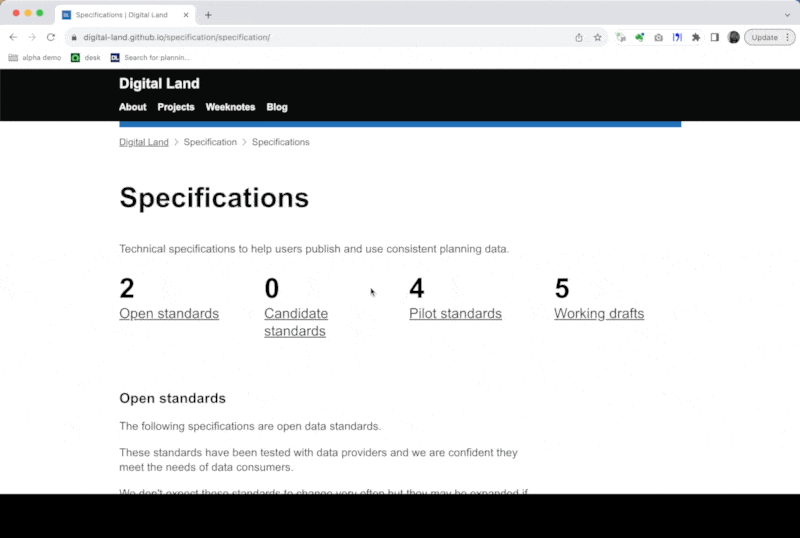Weeknote—15 September 2023
Versioning of specifications
In previous weeknotes we’ve talked about the need to be able to update specifications as we learn more about how they’re being used. We’ve now implemented an initial approach that has allowed us to make changes to Article 4 directions, tree preservation orders and conservation areas. For each of these you can see the latest specification, for instance v1.2.2 of the tree preservation order, as well as all previous versions.

Colm has written a blog post that explains how we’ll handle different versions of specifications.
Speaking of specifications, we have some ideas about how we can improve our documentation and we’ll be running some user research sessions to help us validate what are the priority areas to focus on.
Dataset editor
There are some datasets that we manage within the planning data team, typically these are lists of things that are used to define categories within other datasets, for instance a list of type of planning applications.
We’ve been creating these as .csv files within the respective Github collections but have reached a point where we needed a more efficient way to manage and maintain them and so we prioritised developing a “DLUHC dataset editor”.
The dataset editor gives us an easier way to see a list of all the datasets that we’re currently managing, the records within a dataset, and if you’re logged into Github with access to the dluhc-dataset repo then you’re able to add and edit records.
Next up we’ll be making some UI improvements to the tables and adding the ability to download each dataset as a .csv file.

Nationally significant infrastructure projects
We’ve been looking at Nationally Significant Infrastructure Projects (NSIPs) where there is a desire to add the boundaries to planning.data.gov.uk. We’ve designed a draft specification to help meet this need. At the moment the specification contains information beyond the boundaries but hopefully its a useful starting point for conversations with folk at the Planning Inspectorate and other MHCLG colleagues.